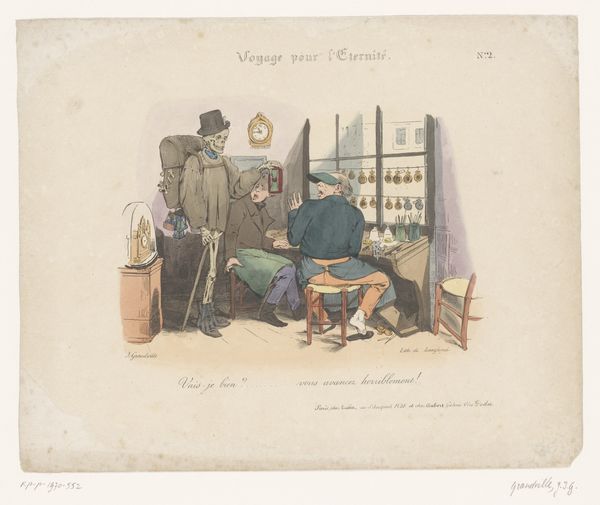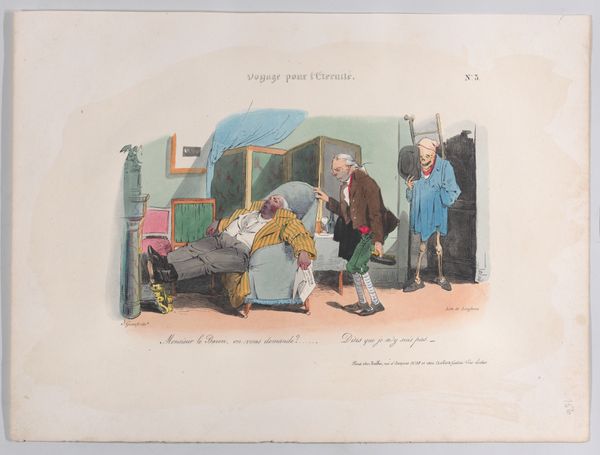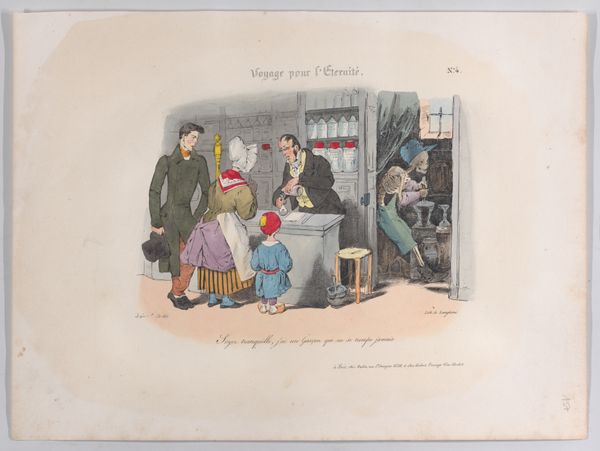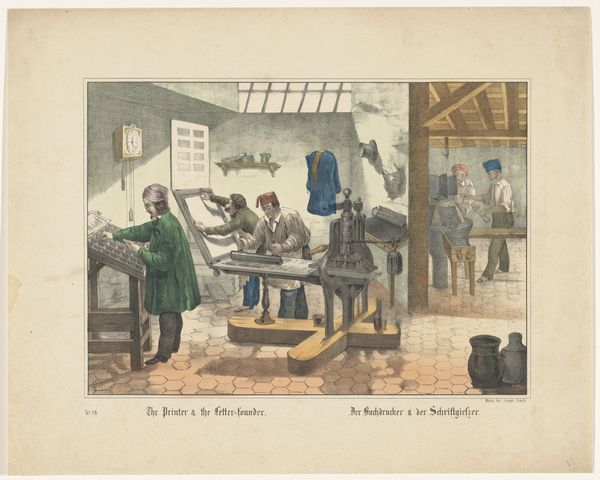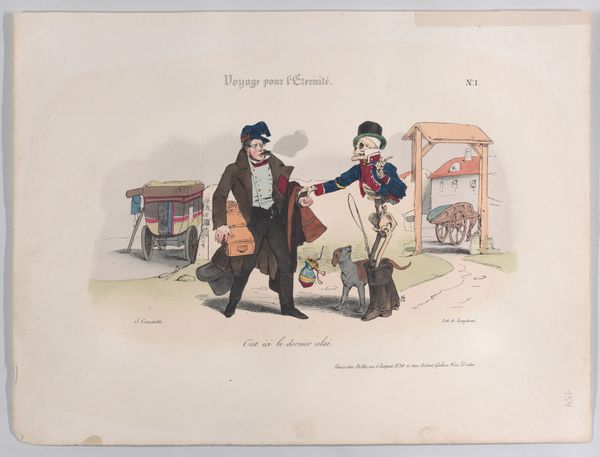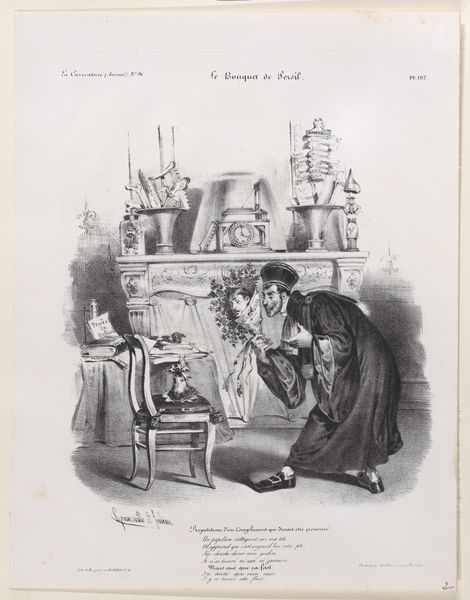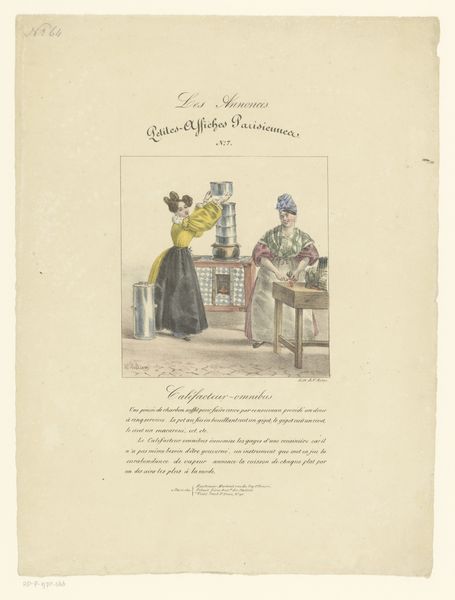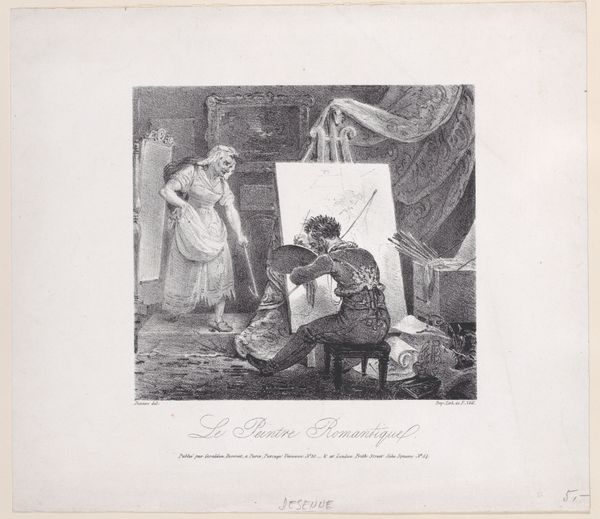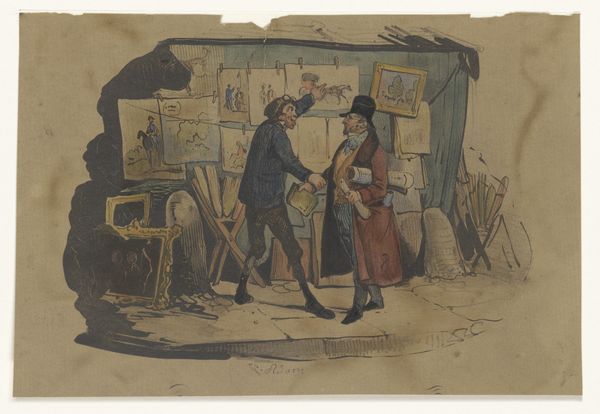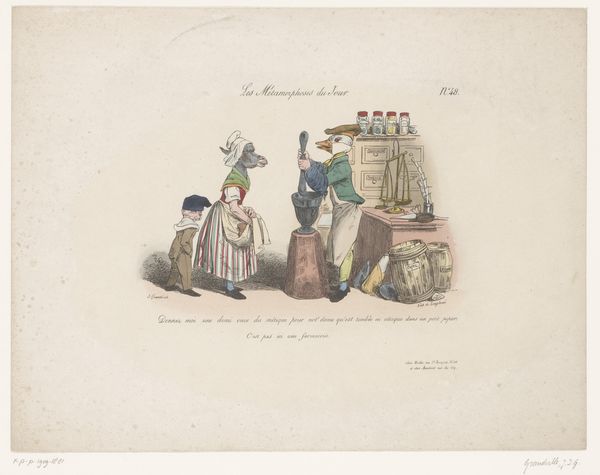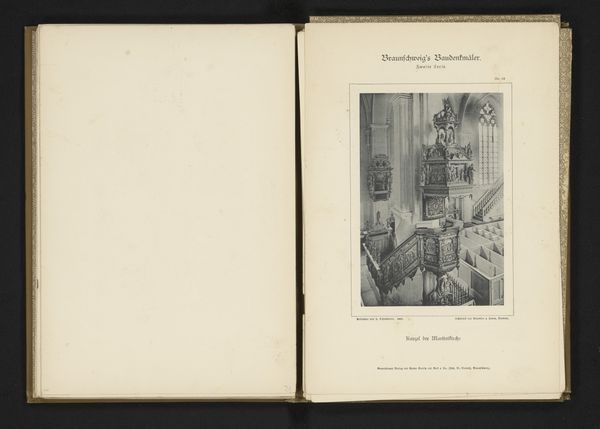
drawing, coloured-pencil, print, watercolor
#
drawing
#
coloured-pencil
#
water colours
# print
#
caricature
#
watercolor
#
coloured pencil
#
romanticism
#
genre-painting
Dimensions: Sheet: 10 in. × 13 7/16 in. (25.4 × 34.1 cm)
Copyright: Public Domain
Curator: Let’s consider "Journey for Eternity, No. 4," a watercolor and colored pencil drawing by J.J. Grandville, created sometime between 1834 and 1844. Editor: My immediate response is that there is an intriguing and almost humorous blend of the macabre with everyday life in this drawing. Curator: Exactly. Grandville often used anthropomorphism and satire to comment on society. Note how the artist employs watercolor washes to delineate textures – the smooth clock faces, the roughly textured coat, the bone. The means of production highlight both craftsmanship and critique. Editor: I'm struck by how this work implicates themes of mortality and capitalism within its composition. A skeletal figure looms over the clockmaker, quite literally watching over him as he crafts objects associated with temporality. What a fascinating intersection of class, labor, and the social anxieties of the 19th century. Curator: Certainly, the print medium itself allowed for wider distribution of this satirical imagery. It wasn’t just the elite encountering these ideas; a burgeoning middle class was engaging with these societal critiques. This reflects the democratization of both art production and social discourse. Editor: The subtle colour palette further enhances the effect. It isn't overtly grim; rather, there’s a delicate balance that humanises what could easily have been grotesque. It provokes contemplation on how time functions differently across social strata, for those who produce objects of leisure and those for whom time is a means of social control. Curator: This invites consideration about labour, value and consumption—what's the price of an item measured against the cost of one’s life force? The artistic process thus functions as both method and message. Editor: It really serves as a potent reminder of the transience inherent to both labour and life, underscoring that broader societal critique of the era. Curator: Reflecting on the methods, what we glean highlights the conditions that shape culture and aesthetics, allowing us to examine art and society as mutually informing entities. Editor: Yes, and engaging with it reveals how artworks like this participate in broader conversations about our place in the social fabric and systems of inequality.
Comments
No comments
Be the first to comment and join the conversation on the ultimate creative platform.
